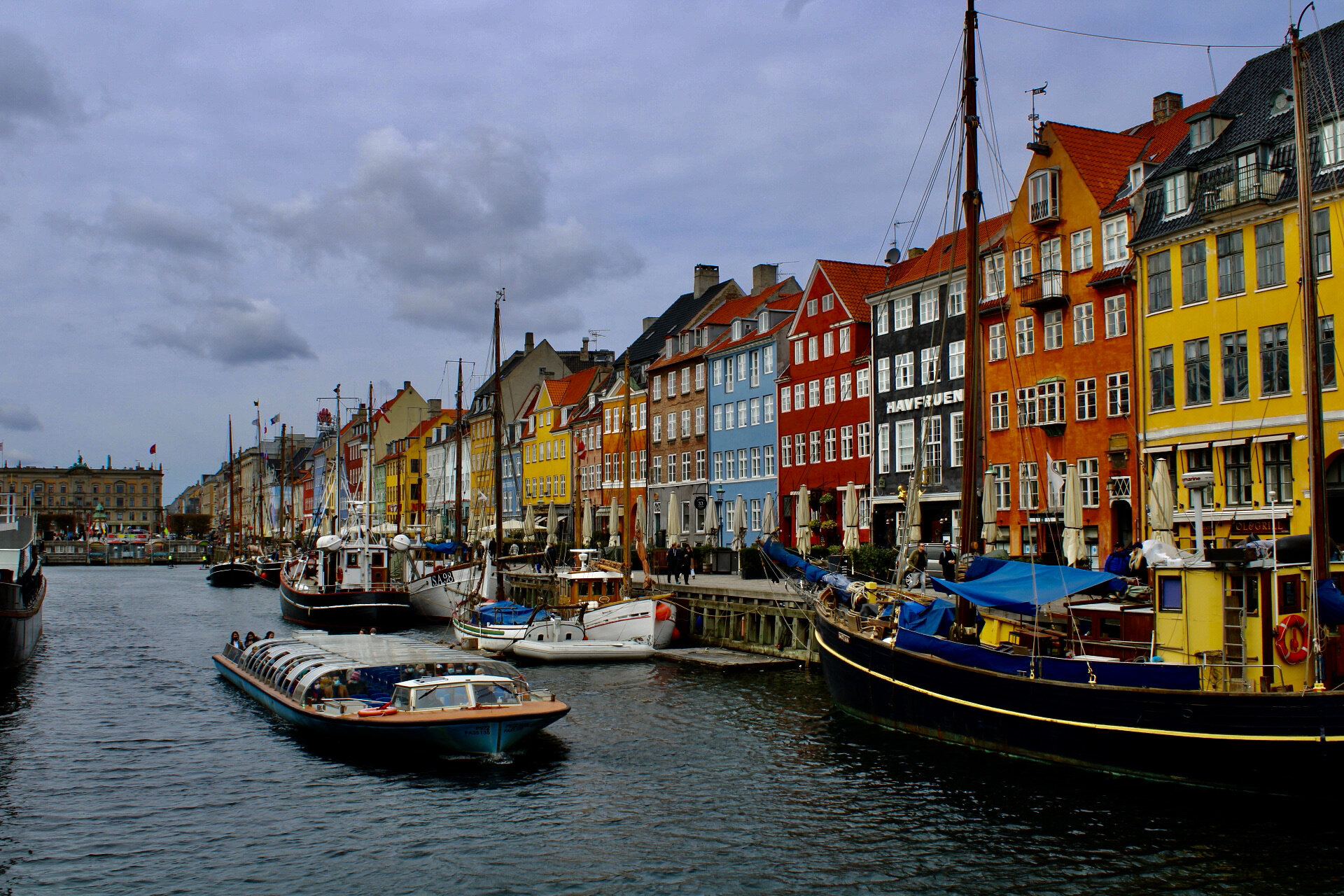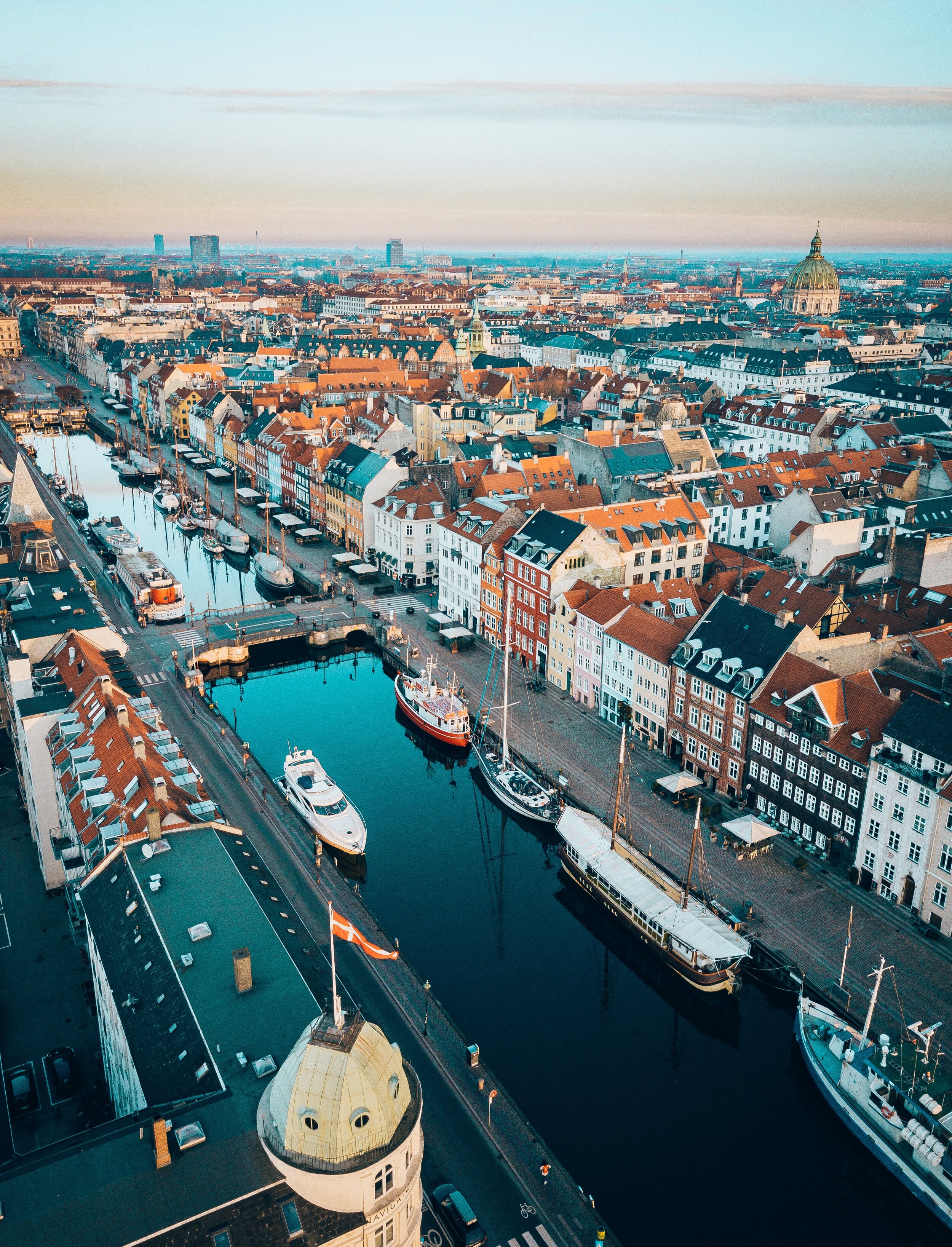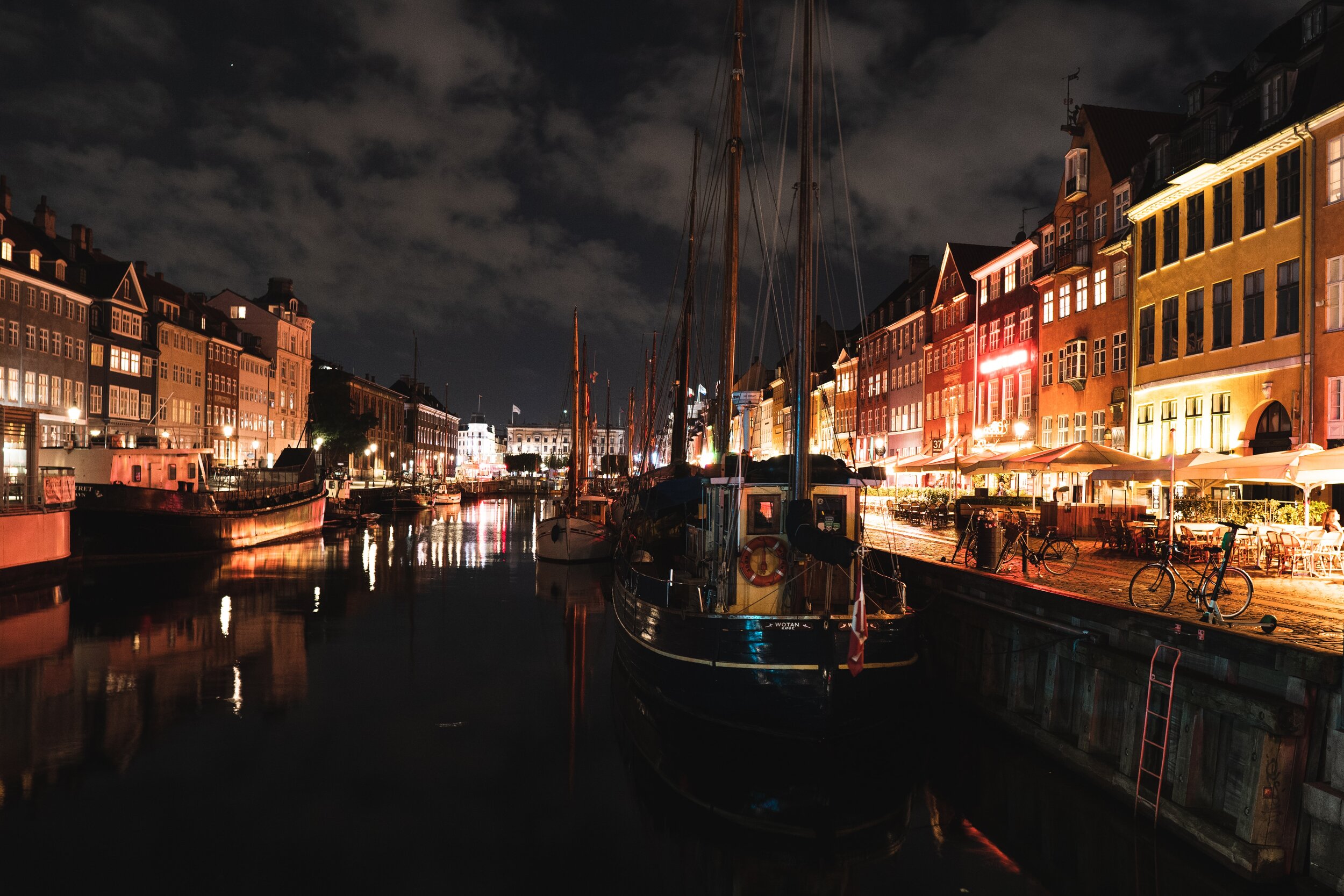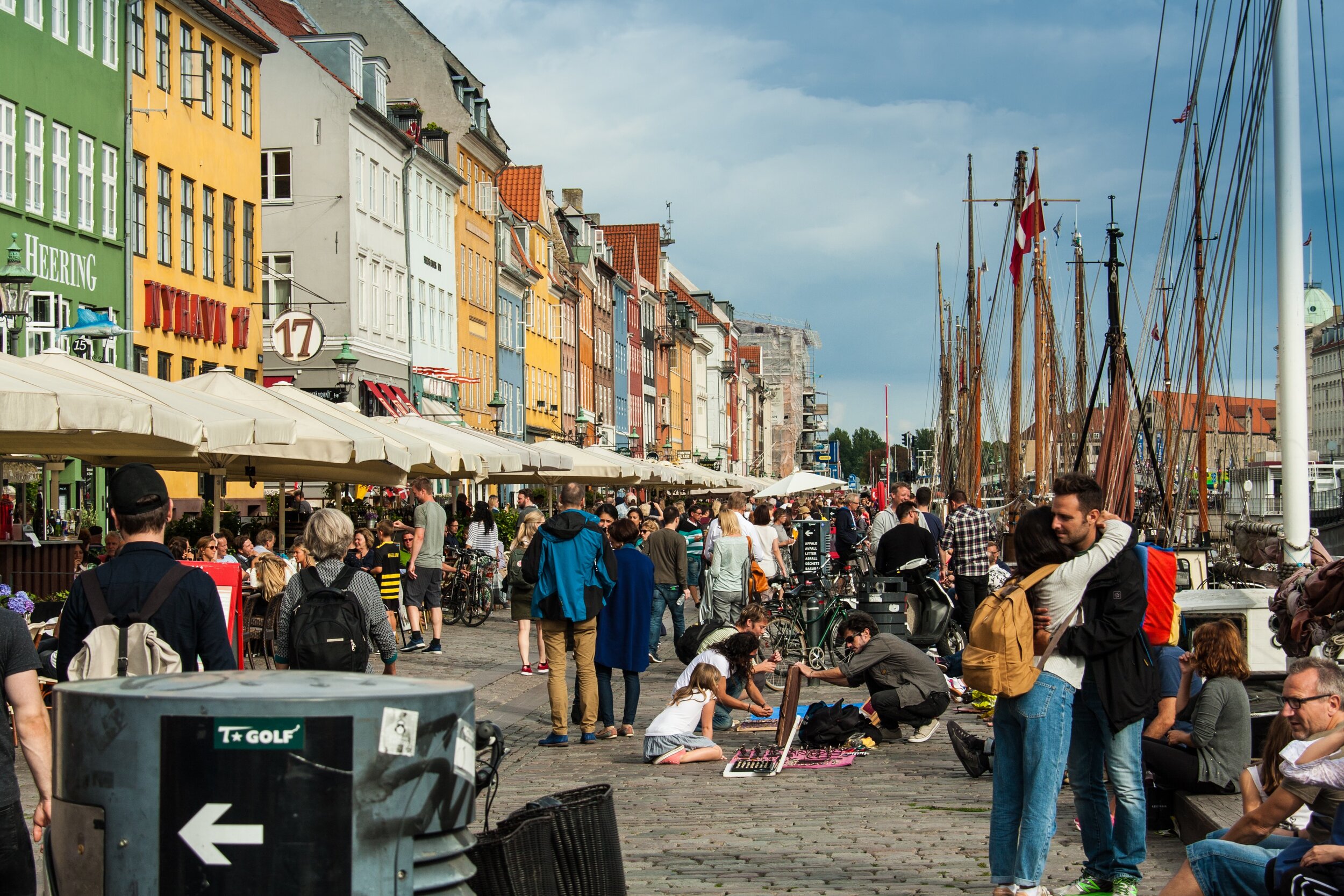Visit Nyhavn, Copenhagen
Nyhavn is undeniably one of the most picturesque areas in Copenhagen. Meaning “The New Harbour” in English, this stretch of canal became the main thoroughfare for merchant ships arriving in Copenhagen in the 17th Century.
The Nyhavn area is characterised by its frontage of beautiful townhouses, extending from Kongens Nytorv to the west, half a kilometre all the way to the harbour, ending at the spectacular Royal Playhouse along the waterside.
Summer evenings in Nyhavn brings out crowds of people as well, who flock to outdoor dining at restaurants or sit on the canal wall to enjoy a drink.The colder Nordic winters brings cosy Christmas markets with stalls selling traditional æbleskiver, roasted chestnuts and gløgg (mulled wine).
Here's everything you'll need to know in order to get the most out of your visit to one of Copenhagen's most celebrated spots.
A short history of Nyhavn
As with many cultural attractions which now draw tourists for their picturesque nature, this wasn’t always the case.
In the 1600s as Denmark’s status as a world power continued to grow, many of the Scandinavian port cities saw rapid growth through trade.
In 1670, King Christian V, seeing that the limited dockside space in the main harbour was hampering trade ships from loading and unloading their goods as quickly as possible, ordered a new harbour to be dug.
It’s no easy feat to dig a brand new canal, particularly without the modern technology and equipment we possess nowadays. Christian V’s engineers were tasked with digging the work with pick axes and shovels. The solution for Denmark? Use Swedish slaves to get the job done.
Swedish prisoners of war, who had been captured during the Dano-Swedish War of 1658 to 1660, were tasked with excavating and dredging out the waterway. The job took 5 years to complete!
Originally called the Gyldenløves Kanal (The Golden Lion’s Canal), Copenhagen residents in the 17th century called it simply The New Harbour and it remained functioning as the city’s main port for over three centuries, the main location for ships loading and unloading cargo from across the world, fishermen unloading their catch and fishmongers selling the bounty along the quay.
The combination of this global trade, hustle and bustle of markets and the constant arrival of sailors meant that a reputation grew up around Nyhavn as a seedy area frequented by prostitutes, pickpockets and thieves, and home to all manner of illicit trade of all kinds.
Hans Christian Andersen’s Nyhavn
Denmark’s most famous native son, Hans Christian Andersen kept rooms at Nyhavn Canal for over 18 years and wrote his first published fairy tale while he was living at No. 20.
The author of works like “The Little Mermaid” and “The Ugly Duckling” not only lived there for two decades, he also died two doors down along the Nyhavn Canal, at No. 18.
While I was visiting Nyhavn as preparation for this article and scouting out the houses where Andersen lived, an elderly lady pointed out the house at No. 9. According to her (and backed up by multiple sources online!) this house remains relatively untouched since its construction in 1681, having undergone no major structural alterations in all that time.
The decline of Nyhavn
After the end of the Second World War, Nyhavn had been in decline for several decades as larger, ocean-going vessels couldn’t navigate into the shallow canal for unloading and loading of goods. The emphasis on the railways in post-war Denmark and the advancements in overland transport meant the formally bustling Nyhavn was left as an empty shell in the centre of Copenhagen.
But by the mid-1960s a group of concerned local citizens formed the Nyhavn Society to put pressure on the government to start revitalizing the area.
By 1977 Nyhavn was declared a veteran ship and museum harbour by the Lord Mayor Egon Weidekamp (great name), and in 1980 the quay-side area was opened up as a pedestrian-friendly walkway.
Since then, the area has been revitalized again into a lively, bustling quarter that resembles its former high status (minus the sailors, prostitutes and drug dealers). Bars and restaurants line the canal, and it is a hive of activity night and day, offering fantastic views and being a great place to take a stroll or take a boat tour.




What to do in Nyhavn
The harbour has retained its hustle and bustle of former times, now in the form of tourist stalls, cafes, restaurants and boat trips. I recommend Rajissimo on the corner of Lille Strandsstræde where we sampled a generous portion of churros with white chocolate!
Before getting lost in one of the many food options though, take a moment to look at Nyhavn from the direction of the sea, with the full facade of the buildings before you.
Take some time to wander the streets and, if you are here around Christmas, sample æbleskiver (fried dough) or gløgg (mulled wine) from one of the many stalls which flank the banks of the canal.
Getting to Nyhavn
From Norreport take the 350S bus to the Kronprinsessegade stop, just four stops down. From there walk about ten minutes along Gothersgade until you pass the Kongens Nytorv and see the canal ahead.
Other options include taking the No. 66 bus to the Nyhavnsbroen stop which is just a few steps away from the canal.
If you’re coming from the airport, it’s just a simple 22-minute ride on the M2 metro to the Kongens Nytorv stop and then you’re just steps away from the beginning of the canal.
Nyhavn is a must-see for anyone who wants to get to know this amazing city! Let me know if you have any comments or questions about the canal in the comments below.
Want more travel tips for your trip to Denmark, Scandinavia, the Nordics or the rest of Europe? Check out Bookmark Travel, a comprehensive directory of all things travel.
